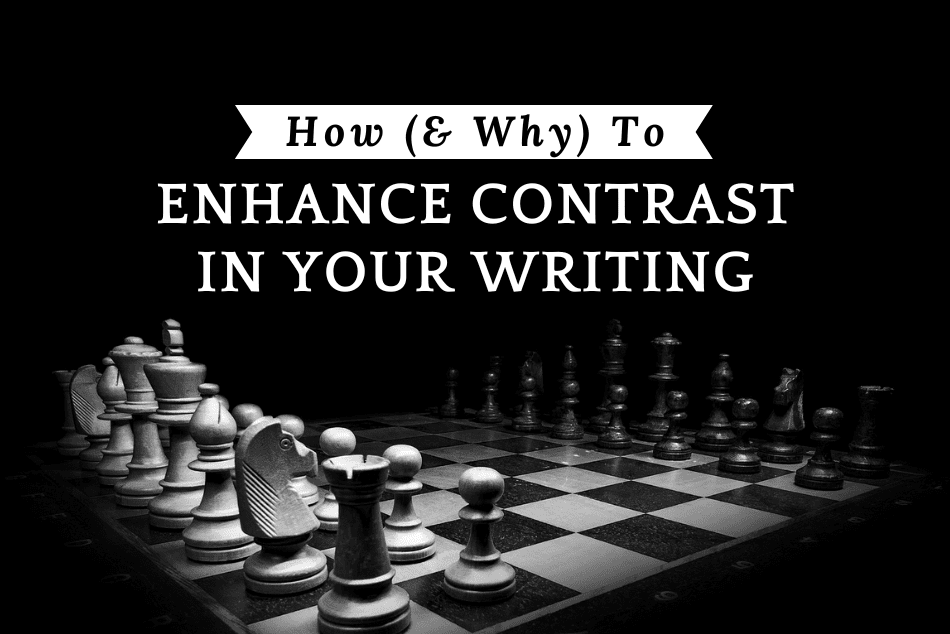Recently, one of my good friends celebrated a milestone birthday, and a group of us working moms set about planning a rare girls’ night out—her choice. Only one problem: We so rarely get time away that she couldn’t decide what she most wanted to do. So, after much debating, we decided for her… to run the gamut.
We began the night with a wine tasting in a stately historic home once owned by the governor of Kentucky, and ended up in a smoky, cash-only honky-tonk, where she lasted a respectable 52 seconds on the mechanical bull.
As I’ve relayed this story in the weeks since, I’ve noticed something striking:
Either of these two outings by themselves wouldn’t turn anyone’s head. But the contrast—from something a little pretentious to something excessively not—makes people smile, delighted. It was the unlikely combo that took a fun night out and made it memorable.
So it is in life, so it can be in our writing—whether fiction or nonfiction.
Heightening natural contrasts in your own work can make characters, settings, themes, and other elements of your story more compelling, simply by drawing attention to the dynamics inherent in incongruous things.
Contrasts can illustrate that we contain multitudes, point out hypocrisy or contradictions, or highlight exceptions to a rule. They can make us laugh, leave us shaking our heads in puzzlement, or keep us on the edge of our seats, showing that anything is possible.
And the edge of their seats is right where you want your readers to be.
Here are some ways to enhance these moments, much the way we’d apply filters to a photo, to turn an ordinary scene into something truly striking.
Contrasting Emotions
Plenty of characters feel lonely by themselves on their couch at home. But there’s something extra empathetic about feeling lonely in a crowded room.
The holidays are rife with examples of this—while cheerful carols and sparkling lights coax us to be merry and bright, there is always someone in the corner of the holiday party who is forcing a smile. Perhaps they’re facing their first holiday without someone they love, grieving something intangible lost in the past year, or worrying over the high heating bill cutting into their slim gift budget.
I wrote about my own experience with this in the New York Times Modern Love, and the outpouring of support in my inbox was proof of how strongly people can relate. The contrast between internal and external emotions (and expectations) can be a powerful thing indeed.
Contrasting Circumstances
I have a soft spot for fish-out-of-water stories (in fact, I recently rounded up some favorites for BookTrib)—and who doesn’t? We relate to the awkwardness of feeling out of place, the fear and exhilaration of rising to a challenge.
But less world-altering circumstances can provide similarly rich storytelling ground to mine. Consider:
- Weather or setting that contrasts a story’s mood or agenda: rain on a wedding day, heartbreak on a honeymoon, stress on a vacation. (All much more interesting to read about than things going according to plan.)
- Odd man out: The sober person at a drunken party, the teammate benched with an injury for the championship, the last one awake when everyone else is sound asleep, the only kid at a fancy dinner, the only adult at a playdate, the only atheist at a church potluck, the only woman in a barber shop.
- Unspoken dichotomies: For every person who feels overextended socially, there’s someone who would give just about anything to be invited into even one close circle. Someone, deep down, knows they’re the least qualified person in every important meeting. And in times of war, traitors try to hide that they’re the most well fed.
Contrasting Characters
Admit it: We’re intrigued by all the ways in which opposites attract—and I’m not just talking about romance. Pairing a young, naive character with an old, experienced one can lead to irresistible charm, whether in a center-stage relationship or one fleeting yet poignant scene. (Catherine Ryan Hyde’s novel Allie & Bea is a wonderful example of this.)
Same goes for the eternal optimist and the curmudgeon. The cheerleader and the goth outsider. The blue-collar worker and the executive banker. The maid and her employer.
Sometimes, the gap between the two proves easier to bridge than we’d have imagined. Other times, the contrast makes the differences seem even more glaring. A pack of nice kids can make a mean-spirited bully seem downright despicable—even to himself. An even-keeled coach can make a hothead on the opposing sideline look completely unhinged.
Contrasting Visuals
I have a friend whose Colorado town was consumed by a wildfire last year—and in the wake of the destruction, she sent me endless pictures of lone houses, trees, and other solitary structures that stood miraculously, randomly untouched in the midst of vast rubble. These images held so much more power and meaning than those of ash alone: They show what was spared and what was lost.
Contrasting visuals can be a wonderful way to evoke symbolism. Think of the first flower peeking through the snow, or the last tree to drop its leaves.
What contrasts in your work-in-progress could you deepen, enhance, or bring to the forefront for more effective storytelling? Visit Career Authors on Facebook to join our discussion.





